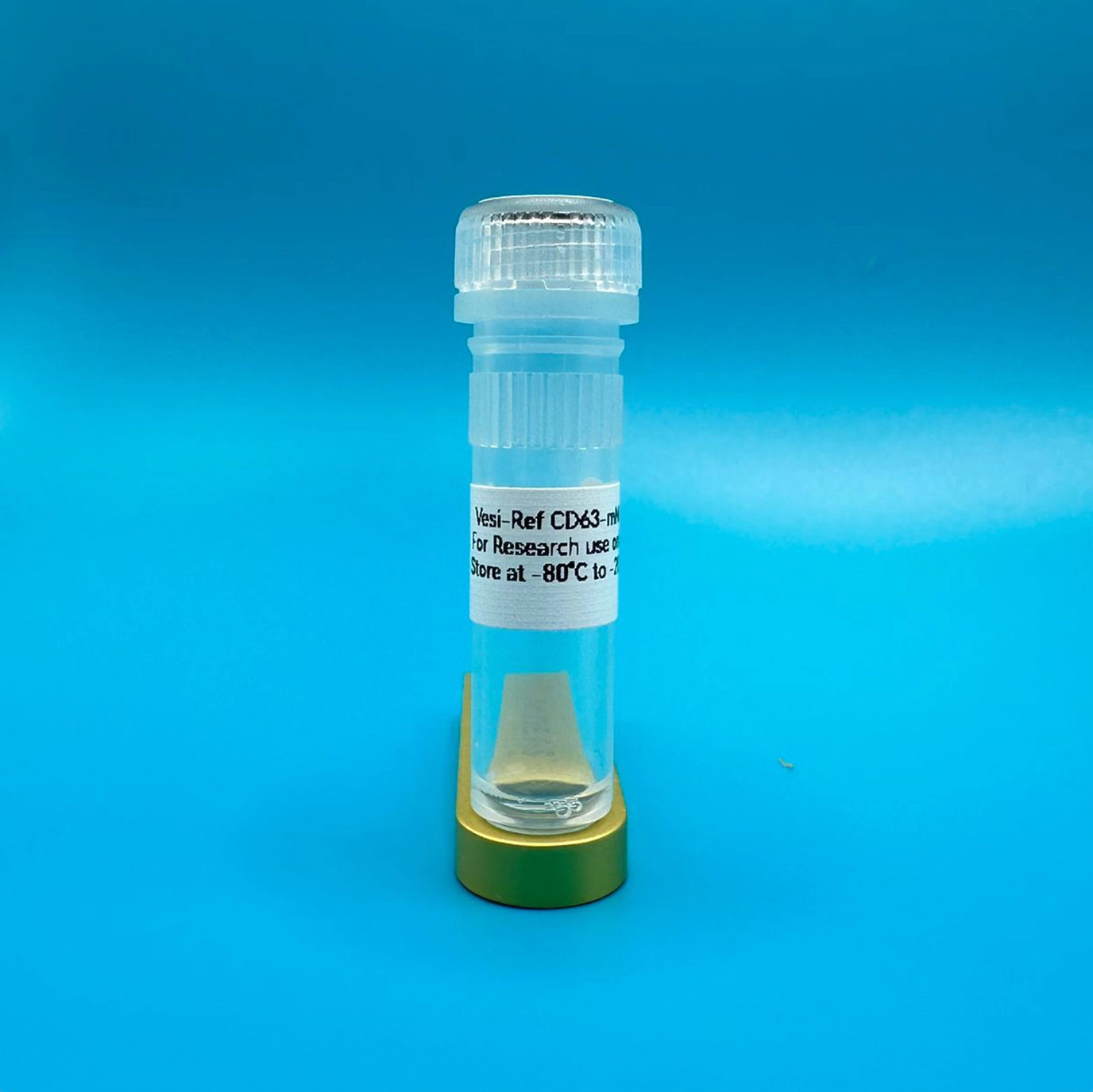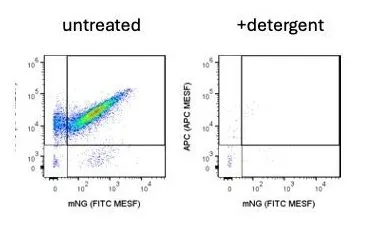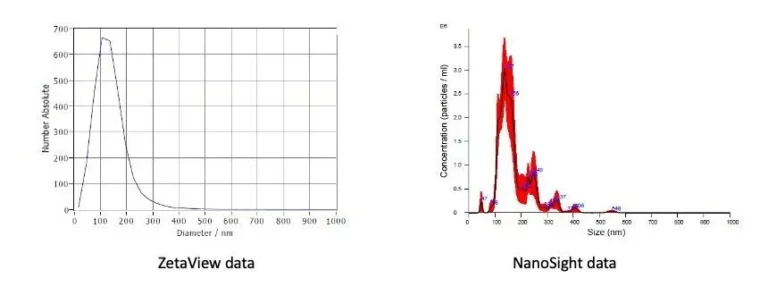
Vesi-Ref CD63-mNG
A new generation of exosome reference material.
- Home
- Vesi-Ref CD63-mNG
Vesi-Ref CD63-mNG is an extracellular vesicle isolate derived from HEK 293 cells engineered to express the fluorescent protein mNeonGreen in the presence of the CD63 tetraspanin protein.


Vesi-Ref CD63-mNG: properties/fluorescence
Analysis by Single EV Imaging Flow Cytometry (Cellstream)
A brighter fluorescence signal
mNeonGreen has an excitation maximum at 506 nm and an emission maximum at 517 nm, making it compatible with most GFP/FTIC filter sets. It is three times brighter than GFP, and appears to be more stable and less prone to laser-induced bleaching than EGFP.
Consequently, mNeonGreen is well-suited for confocal and super-resolution microscopy, particularly for investigating fusion proteins expressed at low levels.
A flexible and stable reference material
Long term stability is an important feature for a reference material, so that its physical and chemical properties can be relied upon in multiple experiments. As it is stabilised with Vesi-Safe buffer, Vesi-Ref CD63-mNG can be safely stored for prolonged periods at -80°Cto -20°C, as well as at operational temperatures during analyses.
Vesi-Ref CD63-mNG can easily be aliquoted upon reception and transported without loss to the point of use in the case of multi-lab experiments requiring a single reference for comparison.

Vesi-Ref CD63-mNG: positive control anti CD63-APC binding
Assessment of EV properties/fluorescence and Fc binding functionality
Analysis by Single EV Imaging Flow Cytometry (Cellstream)
Staining Procedure
25 µl buffer or EVs at a concentration of 1e10 particles/mL were stained for 3h at a final conc of 4 nM with antibodies:
Anti-human-CD63-APC (mouse IgG1), Miltenyi 130-127-492, Lot 5230707982
Post staining samples were diluted 1:10000 in Vesi-Safe buffer before acquisition on an Amnis Cellstream instrument as described before, acquisition time 180 seconds per sample; Data processed and gated as described before (Görgens et al, 2019, Tertel et al, 2020, Dar et al, 2021 https://doi.org/10.1038/s41467-021-27056-3], Wiklander et al, 2024)
Orthogonal exosome characterisation made simple and MISEV2023 compliant
Characterising EVs is essential for estimating their quantity, confirming their presence, and assessing the contribution of non-EV components in an EV preparation. This task is complicated by the small size of EVs, their size and molecular heterogeneity, the absence of universal identification methods, and the non-specificity of many measurement techniques. Consequently, no single measurement or method can meet all EV characterisation requirements. The use of orthogonal analytical methods—those with different measurement limitations—is recommended for comprehensive EV characterisation.
To validate measurements obtained on orthogonal methods, it is crucial to control the sensitivity and limit of detection (LOD) of each technique with a single material of similar physico-chemical attributes to the extracellular vesicles. Because it is an EV isolate, Vesi-Ref CD63-mNG can be used as a reference for all techniques requiring the density, size distribution and the mix of lipids, nucleic acids and proteins to match the studied substrates. Additionally, the presence of intraluminal fluorescence offers another dimension to the reference, by making it readily detectable by devices equipped with the appropriate laser/detector set-up (flow cytometry, FACS, single-resolution microscopy, SP-IRIS, F-MRPS, ELISA, etc.)
Detergent controls for selected/relevant samples
Analysis by Single EV Imaging Flow Cytometry (Cellstream)
Vesi-Ref CD63-mNG + anti CD63-APC

Vesi-Ref CD63-mNG Technical Description
|
Concentration (mNG+/mL, measured by IFCM) |
MFI (FITC MESF) for unstained samples |
Estimate of % engineered (ratio of mNG+APC+ vs APC+) |
Mode diameter NTA (Nanosight) |
Mode diameter NTA (ZetaView) |
Volume |
Buffer |
|
1.32 E10 particles/mL |
786.6309 |
88.90% |
138.6nm |
122.6nm |
100µL |
Vesi-Safe |


